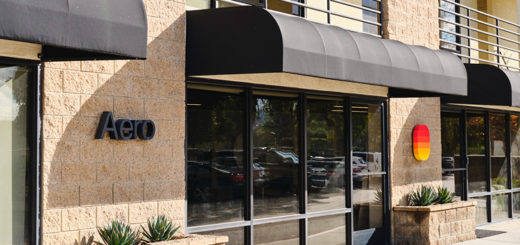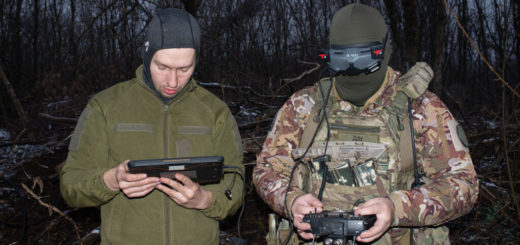New Iranian Simorgh Transport Aircraft Takes Flight to Replace Aging C-130 Fleet
{loadposition bannertop}
{loadposition sidebarpub}
Iran has started official test flights of its domestically built Simorgh light transport aircraft at Shahin Shahr, marking a key step in a program more than 15 years in development. The 100-hour flight campaign aims to certify the aircraft for military and civilian service, highlighting Tehran’s drive for self-sufficiency under sanctions.
According to information published by Iranian Press TV, on October 28, 2025, Iran’s domestically built Simorgh light cargo aircraft began official test flights at Shahin Shahr following a ceremony attended by senior defense and transport officials. Iran’s Civil Aviation Organization said the aircraft must complete 100 flight hours under varied conditions before receiving final approval to join the national fleet, a milestone Iranian media cast as the culmination of a development effort spanning more than fifteen years.Follow Army Recognition on Google News at this link
Simorgh twin-turboprop has a 6-ton payload, 3,900 km range, rear ramp with 463L pallets, short-field tactical lift for troops, medevac, and cargo (Picture source: Meshkat on X).
Simorgh is a twin-turboprop tactical transport designed and built by HESA in Shahin Shahr, adapted from the IrAn-140 lineage with changes aimed squarely at utility airlift. Public data place the airframe at roughly 23 meters in length, a 25-meter wingspan, and 8 meters in height. Reported performance figures include a 6 metric ton payload, 3,900-kilometer range, top speed of around 500 to 533 km/h, and a maximum takeoff weight of about 21.5 tons. Takeoff and landing distances are quoted at approximately 1,450 and 900 meters.
Propulsion is understood to be two engines in the TV3-117 family, a well-known 2,500-horsepower class turboprop used widely across former Soviet designs and assembled or supported domestically by Iran for other programs. The choice signals a preference for rugged, maintainable power plants with established supply chains inside Iran. Authorities emphasize that, while the design traces to the IrAn-140, Simorgh includes a reworked fuselage and engine installation as part of its certification path with the Civil Aviation Organization.
What matters to operators is the cargo system. Simorgh adds a rear loading ramp absent on the baseline IrAn-140, pairs it with a conventional horizontal tail, and revises the wing planform to favor lift and loading. Iranian outlets highlight compatibility with 463L pallets, accommodations for light vehicles and aircraft engines, paratroop seating, and up to 24 stretchers for medevac, a package that aligns closely with the mission set of a modern light airlifter. The 100-hour campaign should validate the short-field envelope with payload, hot-and-high performance, and airdrop profiles.
The capability fills a specific gap in Iran’s force structure. The Islamic Republic of Iran Air Force still leans on aging C-130E/H for tactical lift and Il-76 for heavy haul, while legacy Fokker F27s and a handful of Boeing 707/747 airframes handle utility and support tasks. The IRGC’s Pouya Air supplements with Il-76 and An-74, often on government logistics missions. A domestic, ramp-equipped 6-ton transport offers a right-sized platform for routine troop shuttles, island resupply in the Gulf, medical evacuation, and spares movement that do not justify consuming C-130 flight hours.
In class terms, Simorgh lands among the CN-235, An-26, C-212, and M28. An official CN-235 evaluation lists a 5,950-kilogram payload and 245-knot (about 455 km/h) maximum cruise, making it a close peer on lift and slightly slower on speed. Antonov’s own data put the An-26 at roughly 5,500 kilograms payload and 440 km/h cruise. The smaller C-212 and M28 typically top out around 2.95 to 3.0 tons and 2.3 tons of payload, respectively, trading capacity for STOL traits. On paper, Simorgh’s ramp, pallet compatibility, and runway figures compare well; real differentiation will hinge on reliability, supportability, and demonstrated operations from short or semi-prepared strips during testing.
Years of sanctions have limited access to new aircraft and spares across Iran’s civil and military fleets. Building and certifying a light transport at HESA creates domestic control over upgrades, mission kits, and sustainment cycles, and broadens the trained workforce needed to keep older types flying. CAA officials say Simorgh is moving through the type-certification process, with this 100-hour phase a prerequisite to any fleet entry or export prospects. If, as officials suggest, a short-haul passenger variant follows, dual-use orders could further stabilize the production line.
The program’s supporters describe a clean-sheet leap; critics see a deep modification of an existing platform. Either way, the engineering task is real. Iran must prove the aircraft’s airworthiness with full envelope expansion, document parts traceability under sanction constraints, and publish a credible sustainment plan to ensure fleet availability. For a military that has long rationed Hercules hours, a successful Simorgh gives planners a domestic workhorse to carry the daily load while freeing scarce tactical and strategic assets for priority missions.

{loadposition bannertop}
{loadposition sidebarpub}
Iran has started official test flights of its domestically built Simorgh light transport aircraft at Shahin Shahr, marking a key step in a program more than 15 years in development. The 100-hour flight campaign aims to certify the aircraft for military and civilian service, highlighting Tehran’s drive for self-sufficiency under sanctions.
According to information published by Iranian Press TV, on October 28, 2025, Iran’s domestically built Simorgh light cargo aircraft began official test flights at Shahin Shahr following a ceremony attended by senior defense and transport officials. Iran’s Civil Aviation Organization said the aircraft must complete 100 flight hours under varied conditions before receiving final approval to join the national fleet, a milestone Iranian media cast as the culmination of a development effort spanning more than fifteen years.
Follow Army Recognition on Google News at this link
Simorgh twin-turboprop has a 6-ton payload, 3,900 km range, rear ramp with 463L pallets, short-field tactical lift for troops, medevac, and cargo (Picture source: Meshkat on X).
Simorgh is a twin-turboprop tactical transport designed and built by HESA in Shahin Shahr, adapted from the IrAn-140 lineage with changes aimed squarely at utility airlift. Public data place the airframe at roughly 23 meters in length, a 25-meter wingspan, and 8 meters in height. Reported performance figures include a 6 metric ton payload, 3,900-kilometer range, top speed of around 500 to 533 km/h, and a maximum takeoff weight of about 21.5 tons. Takeoff and landing distances are quoted at approximately 1,450 and 900 meters.
Propulsion is understood to be two engines in the TV3-117 family, a well-known 2,500-horsepower class turboprop used widely across former Soviet designs and assembled or supported domestically by Iran for other programs. The choice signals a preference for rugged, maintainable power plants with established supply chains inside Iran. Authorities emphasize that, while the design traces to the IrAn-140, Simorgh includes a reworked fuselage and engine installation as part of its certification path with the Civil Aviation Organization.
What matters to operators is the cargo system. Simorgh adds a rear loading ramp absent on the baseline IrAn-140, pairs it with a conventional horizontal tail, and revises the wing planform to favor lift and loading. Iranian outlets highlight compatibility with 463L pallets, accommodations for light vehicles and aircraft engines, paratroop seating, and up to 24 stretchers for medevac, a package that aligns closely with the mission set of a modern light airlifter. The 100-hour campaign should validate the short-field envelope with payload, hot-and-high performance, and airdrop profiles.
The capability fills a specific gap in Iran’s force structure. The Islamic Republic of Iran Air Force still leans on aging C-130E/H for tactical lift and Il-76 for heavy haul, while legacy Fokker F27s and a handful of Boeing 707/747 airframes handle utility and support tasks. The IRGC’s Pouya Air supplements with Il-76 and An-74, often on government logistics missions. A domestic, ramp-equipped 6-ton transport offers a right-sized platform for routine troop shuttles, island resupply in the Gulf, medical evacuation, and spares movement that do not justify consuming C-130 flight hours.
In class terms, Simorgh lands among the CN-235, An-26, C-212, and M28. An official CN-235 evaluation lists a 5,950-kilogram payload and 245-knot (about 455 km/h) maximum cruise, making it a close peer on lift and slightly slower on speed. Antonov’s own data put the An-26 at roughly 5,500 kilograms payload and 440 km/h cruise. The smaller C-212 and M28 typically top out around 2.95 to 3.0 tons and 2.3 tons of payload, respectively, trading capacity for STOL traits. On paper, Simorgh’s ramp, pallet compatibility, and runway figures compare well; real differentiation will hinge on reliability, supportability, and demonstrated operations from short or semi-prepared strips during testing.
Years of sanctions have limited access to new aircraft and spares across Iran’s civil and military fleets. Building and certifying a light transport at HESA creates domestic control over upgrades, mission kits, and sustainment cycles, and broadens the trained workforce needed to keep older types flying. CAA officials say Simorgh is moving through the type-certification process, with this 100-hour phase a prerequisite to any fleet entry or export prospects. If, as officials suggest, a short-haul passenger variant follows, dual-use orders could further stabilize the production line.
The program’s supporters describe a clean-sheet leap; critics see a deep modification of an existing platform. Either way, the engineering task is real. Iran must prove the aircraft’s airworthiness with full envelope expansion, document parts traceability under sanction constraints, and publish a credible sustainment plan to ensure fleet availability. For a military that has long rationed Hercules hours, a successful Simorgh gives planners a domestic workhorse to carry the daily load while freeing scarce tactical and strategic assets for priority missions.






